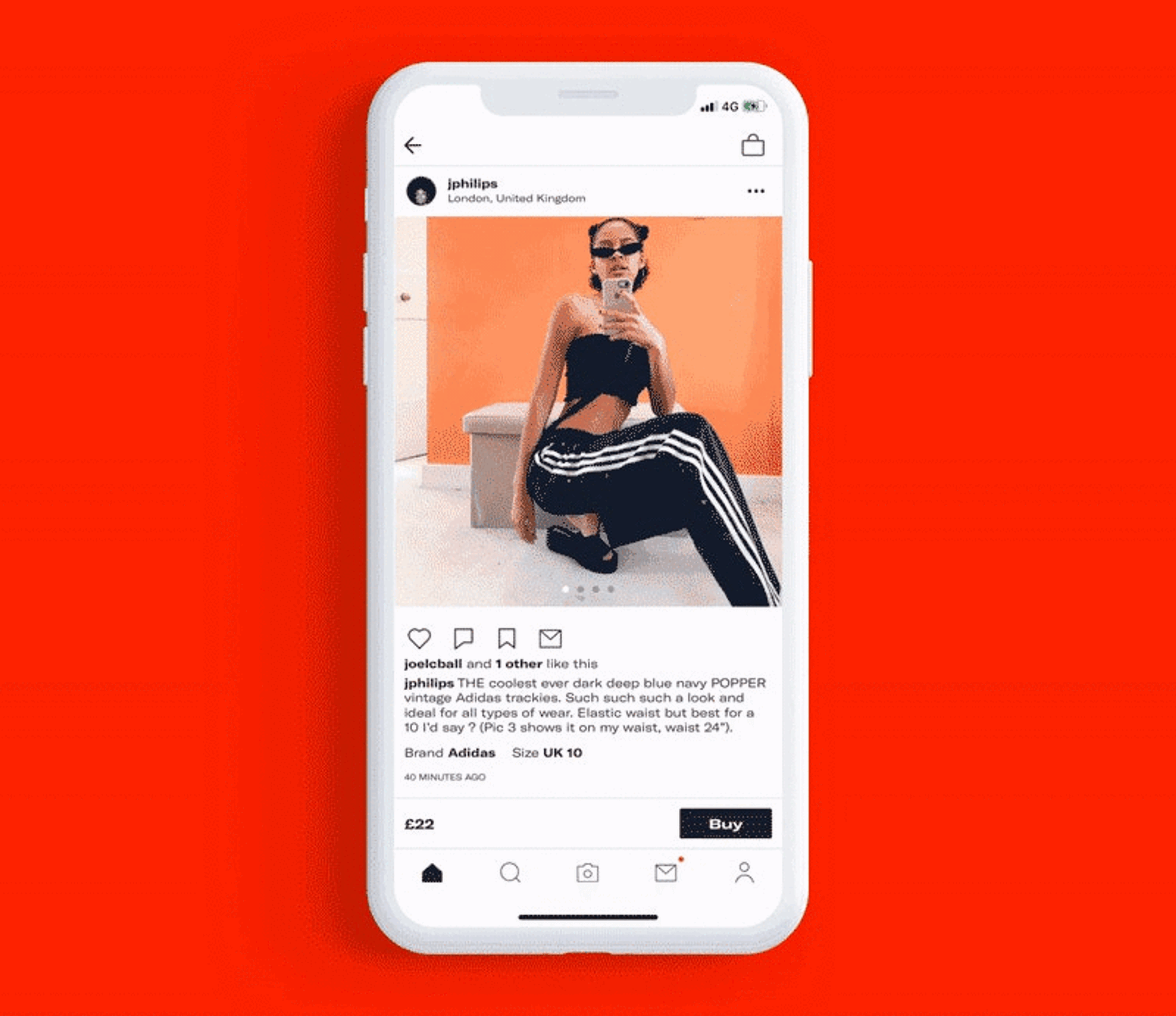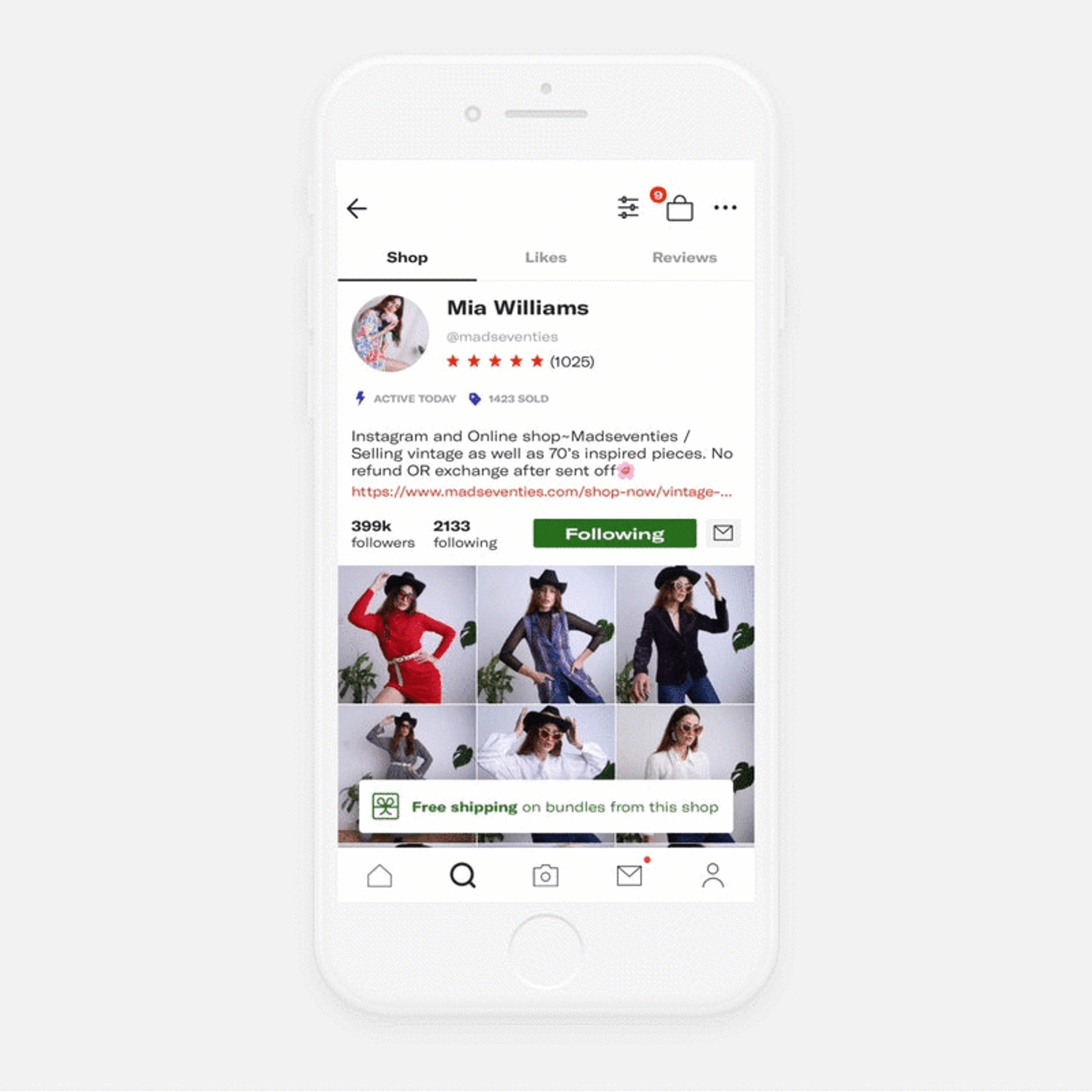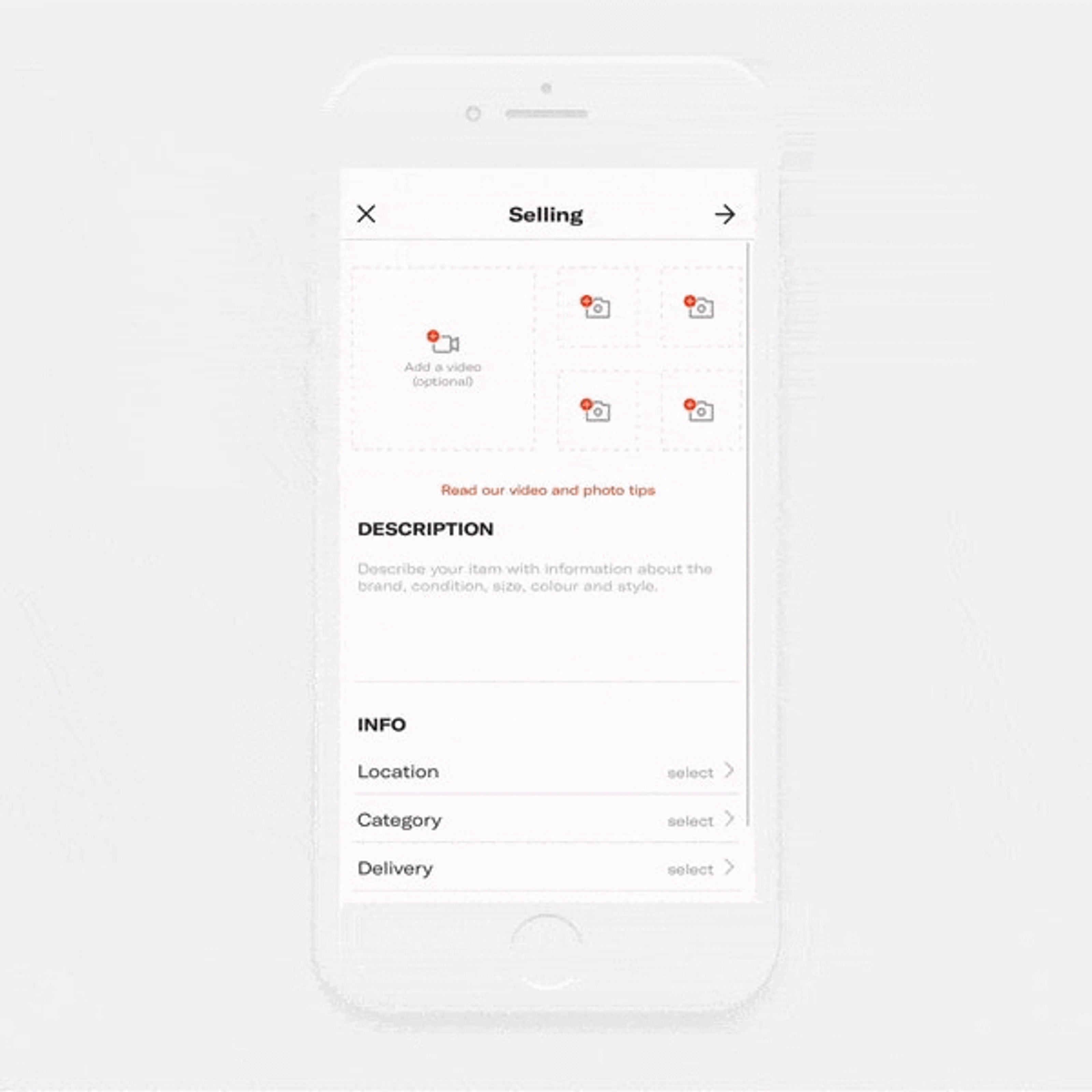Chrystal King

Meet Chrystal King, one of the designers behind your Depop experience
Working in a Parisian architecture firm for a year after graduation sparked a realisation for Chrystal King: This wasn’t for her. But not one to be easily deterred, she scoured the internet for “every free course available online” to learn more about UX/UI. Beginning with working at startups, she started climbing the rungs of Boiler Room as a digital product designer and then landed a job at Depop at the beginning of last year. Here, she shares the secret similarities between architecture and product design, describes the variety of working life at Depop and cites the importance of a good office culture fit.
Current Role
How would you describe your job at Depop?
As a product designer, I work on what a digital experience looks and feels like for the person using it, this could be on an app or a website.
Currently, I work at Depop – a fashion marketplace where the next generation buy, sell and get inspired. I’m on the ‘Sellers’ team so the majority of my work is geared towards designing experiences and tools that help sellers, sell more.
What does a typical working day look like?
In the mornings I tend to be at my desk, I could be sketching, working out the information architecture, finalising screens or creating a prototype.
I tend to spend a lot of time behind my Macbook screen, but our office has different breakout areas, so towards the afternoon I’ll usually be working in one of those spaces. I like to switch up my work environment – I think it stimulates creativity. But most importantly, it helps you interact with people outside of your team. It’s a good way to get their perspective. I recently wrote about how important it is to get feedback from non-designers.
If I’m not behind a screen, I’m probably meeting some Depop sellers to better understand their experience on Depop, presenting to stakeholders or in our weekly design meeting. More recently, I’ve worked from our New York office, conducting user research to gain a better understanding of our US sellers. Whilst I was out there I shadowed some of our top sellers and experienced a day in their life.
How did you land your current job?
I saw my current role advertised on LinkedIn. Depop was a brand I loved, so I applied directly on the website. I heard back within the same week, went through the different interview stages and got the job offer within the same month.
What are the most enjoyable aspects of your job?
I used to really enjoy the exploration phase of a project – where the sky’s the limit. I still enjoy it but now, but I’d probably say the most enjoyable part is when we discover a constraint, especially technical ones – which I’ve come to learn are inevitable for the most part. Sometimes, they cause you to adapt a design or change it completely and that’s where the real problem-solving happens.
Outside of the design process, I love having to regularly meet different people that use our app, as part of my job. Everyone has an interesting story; often you leave feeling more inspired than you did coming in, and even more passionate about what you’re building.
What has been the most exciting project of the last twelve months?
Quite recently we created a way for people to buy multiple items in a single transaction, by bringing a bag to Depop.
It was quite an interesting problem to solve because it touched every part of the app and along the journey, we discovered so many constraints and edge cases – so it took a lot of adapting and rethinking the experience. I was the only designer on the project, I worked quite closely not only with the engineers and product manager on my team, but also with other parts of the business including marketing, brand, and community support. As a whole, the project was really collaborative and was massively shaped by the feedback we received at different points.
What skills are essential to your job?
Being able to communicate is a massive part of being a product designer. You don’t spend as much time designing as you do presenting your designs to people, articulating why you think it’s a good solution and negotiating any tradeoffs you’ve had to make along the way.
I think as a creative, you need to be able to make connections between things that seem unrelated and use them as fuel for innovation. I tend to do this by exposing myself to things that seem unrelated and then leaving my brain to do the rest in the background.
Is there a resource that has particularly helped you? And which you would recommend to someone else?
I’ve found podcasts to be really useful. My top three are High Resolution, How I Built This with Guy Raz and The Crazy One. Sidebar.io is also great for giving you a daily snapshot of what’s going on in the design world; and then for more inspirational content, Abstract on Netflix is amazing – I could watch the Tinker Hatfield episode a million times.
How I Got Here
What influence has your upbringing had on your work?
Growing up, I was always told that there’s no such thing as a bad job. I was encouraged to do what I want as long as I’m the best at what I do. That’s definitely stuck with me even today.
How is the subject you studied useful to your current role?
I think there’s a lot of similarities between product design and architecture, which I previously studied. For both, you’re designing for a user and you have to bear in mind how they navigate a space (physical or digital) – you have to be intentional about it. You ask yourself questions like, “Do I want to send people through the spaces in this building using the quickest route? Or should I take them through a more scenic route?”
Those decisions play a part in how you map out rooms in an architectural plan or the information architecture in a digital product. Architecture as a whole teaches you to experience and see things in a different way and I’m glad I studied it.
After graduating, what were your initial steps?
After graduating I moved to Paris and worked for an architecture firm. It was a great experience – at the time I’d always wanted to live and work in Paris. But I soon realised it wasn’t for me, so after my contract ran out I moved back to the UK. I knew I wanted to do something creative but didn’t quite know what so I began trying different things.
I’d heard someone mention UX/UI design to me in the past, but I knew nothing about it so I began to immerse myself in every free course available online, build a curriculum for myself and learnt loads. During this time, I found an early stage start-up that needed a designer and ended up being able to put the skills to work.
Was there a particular project that helped your development?
Working at an early stage start-up you wear so many hats, it’s very hands-on and there’s a lot of learning on the job, so naturally, you grow super-fast in that environment.
But I’d also say that working at Depop – a much bigger company where we ship features to more than 15 million users every week – provides an opportunity to develop a lot too, you get to ship at scale, test things out, quickly see results and find the balance between making data-informed decisions but also listening to your community of users.
What’s been your biggest challenge?
Working in places where there wasn’t a good culture fit. We spend most of our lives at work, so it’s super-important that you find the right place for yourself.
Second to this, I’m naturally quite introverted and a big part of my role includes presenting, sometimes to our CEO and other members of the leadership team. I’ve learnt that the more you expose yourself to these situations, the more you become normalised to them and the easier it gets. I’m also a Christian and I believe that having faith really helps you overcome what might seem like a mountain.
What have been your biggest learnings with making money as a creative?
Negotiate, negotiate, negotiate.
Words of Wisdom
What advice would you give to an emerging creative wanting to get into the same kind of work?
Never stop learning, use all the resources you can get hold of. Don’t let anything or anyone ever stop you.





